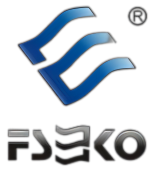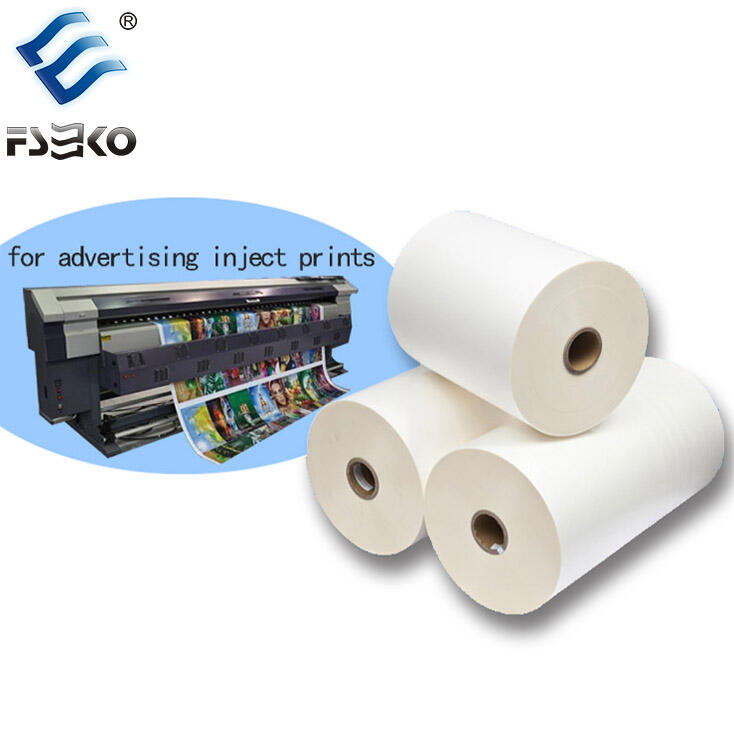Benefits of Inkjet Lamination for Creative Projects
Enhanced Durability and Protection
Inkjet lamination greatly increases the life and durability of any printed project by providing a protective layer of film against exposure to UV light, water and physical handling. Some research has indicated that lamination can increase the lifespan of printed items by 50%, proving to be an invaluable resource to help maintain the quality of the content. This is important for maintaining high quality visual parts such as photos and there marketing products together without any ink smudges and fade. Also, laminated finishes are more durable and can be wiped down if need or cleaned, which is perfect for frequently touched or displayed materials (i.e. postes and signage).
Eco-Friendly Laminating Film Options
Steady market requirements of sustainability, have brought us the creation of laminating films with respect for the environment, laminated films that have been created from recyclable materials, with low impact on the environment, while still maintaining high-end quality. They are also usually chemical free and will be safe for you and the environment. Alternatives of this type have become of greater interest as environmentally-friendly procedures become more important. In addition, industry certifications such as that from the Forest Stewardship Council (FSC) can also help inform the choice of sustainable laminating products in the context of an emphasis on environmental responsibility.
Versatility Across Multiple Mediums
Inkjet lamination's versatility makes it compatible with a variety of materials that include paper, cardstock and some plastics, for creative freedom in any project. This flexibility allows for its application to business cards to art posters, maintaining a sheen that suits either in a professional and personal aspect. Furthermore, inkjet lamination is compatible with various printing systems, such as Direct-to-Film (DTF) printing, opening up more creative possibilities.
Creative Applications of Inkjet Lamination
Preserving Artwork and Photographs
Laminate is an essential ingredient to extend the life of artist and photographer's artwork; interpretation of artwork has never been so real. This protects art and photographs from the harmful effects of moisture and fingerprints and extends the vibrancy and detail of displayed art. Data from art conservators indicate that laminated objects may exhibit little apparent degradation even after exposure for decades. This feature makes lamination the most suitable for pieces being presented is in homes, galleries, and museums, which safeguard against harmful light and uv rays that dull the art.
Customizing DTF Paper for Textile Printing
Wearing resistance of printed fabrics can benefit from DTF printing using laminated DTF paper in textile printing. This method enables custom images to be transferred onto any type of textile which can withstand the heat of transfer process, superb for creating anything you can imagine! It's especially popular in the clothing industry, where quirky clothing series and promotional apparel benefit from lasting, high-quality prints. Dressing up apparel with personalized DTF paper has made it possible to create individual treasures that balance aesthetics with toughness with the effective Inkjet garment printing.
DIY Craft Projects: Stickers, Bookmarks, and More
Inkjet lamination serves as a valuable resource for DIYers and capable of increasing their stickers and bookmarks aesthetic and longevity. The technique enables several finishing options from a clear glossy lamination which gives stickers a fantastic shine to a more subtle matte finish which caters especially to fashion and design preferences. Laminated project using x product" You get the idea.complexContent Crafters have also mentioned that the laminate is pretty durable for everyday use, making them a top pick for things like gifts and personalized designs."Custom made items like gifts and personalized designs. These laminated projects make great projects for kids for themselves or for giving.
Choosing the Right Laminating Materials
Heat Lamination Film vs. Cold Lamination
Choosing between hot and cold lamination is also key for obtaining desired performance. In the heat lamination process, the film is applied to the substrate and heat and pressure are used to adhere the film to the material resulting in a strong, firm bond appropriate for industrial applications, including wide format inkjet printing. Hot lamination requires heat-activated adhesives, while cold lamination uses adhesives that do not need heat, so that, for example, if your material does not withstand heat processing (like a photograph). In selecting a method, you’ll want to take into account desired durability, material compatibility and the finish you want (for either professional or d.i.y. metalwork) as well as other variables.
Where to Buy Laminating Film: Quality Considerations
The quality of laminating film one buy’s is very crucial to the look and lifespan of laminated documents. Quality suppliers are key; try and find a manufacturer known for reliable, long lasting materials. Check out options at online marketplaces, office supply chains and specialized print shops, making sure to compare specifications and read reviews. During the selection process, such quality certification bodies can provide information and assistance to consumers in the course of an informed purchasing process, which enables a consumer to select films that are appropriate to the consumers project need.
Specialty Films for Inkjet Printing
Thanks to its patented UV layer, print quality is improved when using ink-jet printers, ideal for ink-jet printed documents. These are the same films that you would find at the Brazilian salons that will allow you to achieve color that is optimized for adhesion and vibrant color. They are especially useful for printing high definition pictures or complex designs, while maintaining the color intensity and level of detail. Several manufacturers have films that are designed for specific printing applications from eco-friendly to heat lamination. These specialty films allow users to get great results whether they are professional inkjet laminating services or a DIY employee.
Professional vs. DIY Inkjet Lamination
When to Use Professional Lamination Services
Commercial Stamping and Printing Business – A professional grade lamination machine is perfect for commercial printing as well as all other subsequent processes in a pro print shop. These services are prepared to accommodate complex projects that hold up well to frequent handling and deliver a slick, professional look. It’s especially important in client pitches or when preparing a presentation – professionals bring the best finishing work. And in any case, the cost of outsourcing such mammoth installations would probably save both time and money when compared with trying to do it ‘in-house’.
Step-by-Step Guide for Home Lamination
Home lamination can be a practical approach for various DIY projects. To begin, gather your supplies: laminating sheets, an inkjet printer, and a laminator (either thermal or cold). Follow these steps:
- Print your document using the inkjet printer.
- Place the printed document inside the laminating pouch.
- Run it through the machine, ensuring settings are appropriate for the type of film used.
After lamination, allow the laminated item to cool for optimal results. Lastly, trim the edges if necessary to achieve the desired finish. This straightforward process can be advantageous for smaller craft projects and personal tasks.
Troubleshooting Common Lamination Issues
Problems in lamination, such as bubbling, folding and incomplete coverage, are frequent and can result from inappropriate temperature and film alignment. To counteract these issues, you'll want to avoid rushing and provide enough time for your laminating machine to warm up thoroughly and perform periodic roller cleaning to avoid build-up of residue. Diagnosing why those things went wrong and doing some more preventative measures could save you time, and money on your DIY lamination so that it looks professional.
Sustainability and Innovation in Lamination
Advancements in Recyclable Laminating Films
Recyclable laminating films Material development for lamination has evolved; and recyclable laminating films that balance performance with environmental responsibility are. These advances are revolutionizing the industry with films that maintain strength while greatly reducing their environmental footprint. The lifecycle of these goods are also commonly represented as having a smaller carbon footprint than those of traditional products, therefore providing a green alternative for eco-friendly enterprises. Many of the companies in this field also add their reputations of veracity by applying certifications that ensure their claims of sustainability, sold and promote the commitment to the green eco-friendly.
Reducing Waste with Precision Lamination Techniques
Accurate lamination is now all the more important A in producing a minimum amount of waste and obtaining maximum efficiencies. Through the adjustment of the film size, like a custom-size pants, and the optimum settings, film usage and resources are saved. Leading companies demonstrate the benefits of operational improvements by material savings and product quality improvements. In addition to being environmentally friendly by minimizing material waste, precision techniques save time and increase the productivity of production. Consequently, organisations which implement these standards find themselves in a good position to tap into the growing green economy.
Future Trends in Digital Lamination Technology
We can expect that the inkjet lamination will undergo radical changes in the future through the development of digital technology. These advancements can offer more automated and accurate applications that can help improve productivity and quality. In particular, the invention of 3D lamination has the potential to change the industry by opening up new applications using laminates that are otherwise too difficult in complex and decorative applications. In addition, AI and machine learning will also be merged with lamination processes to enhance quality control and even material choice, for increased precision and efficiency, it concluded. With advances in such devices, the standards of techniques in laminating are expected to be redefined.


